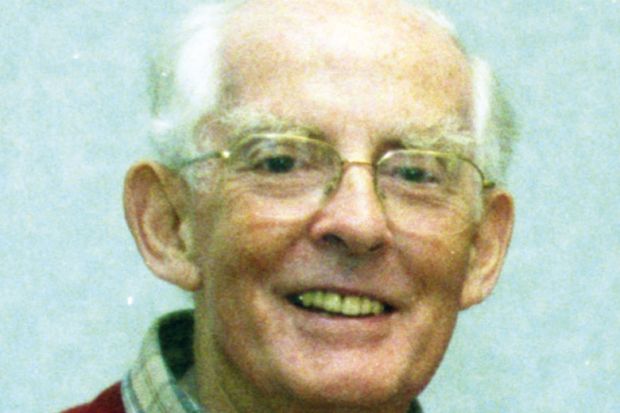A pioneer of new approaches to teaching technology in schools has died.
Geoffrey Harrison was born in Newcastle upon Tyne in 1928 and studied at Dauntsey’s School in Wiltshire, where the philosophy of self-help had a deep impact on his subsequent development. He worked as a radar mechanic in the Royal Air Force (1947-49) before reading mechanical sciences at St Catharine’s College, Cambridge (1949-52) and working as an assistant at an electrical engineering consultancy called Merz and McLellan (1952-54). This led him to reflect on how to improve engineering education, so he became a science lecturer at the Royal Naval College in Dartmouth (1954-57).
Disappointed that the job allowed him no time for practical work, Professor Harrison applied to his old school, saying that he was looking for a role “where ingenuity at devising apparatus is useful, where one can develop ideas on teaching and where one’s work can be of clear value”. He was appointed engineering master at Dauntsey’s (1957-65) and soon put his philosophy into practice by getting the boys to design a new engineering block. This led to a position as principal lecturer and head of the department of creative design at Loughborough Training College (now part of Loughborough University), 1965-72, where he was invited by the Schools Council to oversee a highly influential curriculum development project known as Project Technology.
In 1972, Professor Harrison became the head of the new National Centre for Schools Technology at Trent Polytechnic (Nottingham Trent University from 1992). He oversaw the construction of the custom-built Barnes Wallis building, secured a promotion to professor of design and technology education in 1980 and soon became one of the most influential figures in his field. He led the government-funded School Technology Forum for teachers and edited the journal School Technology. The 1985 book he co-authored with Paul Black, In Place of Confusion, helped establish the scope of design and technology education and its links with science education, and he played a central role in ensuring a place for design and technology in the 1989 National Curriculum.
“Professor Harrison’s work is recognised both nationally and internationally as an important framework for technology teaching,” said Malcolm Plant, formerly principal lecturer in design and technology education at Nottingham Trent. “He had vision, determination and tenacity to pursue his belief in the importance of creative approaches to technology that continues to influence university teacher training programmes and schools across the UK.”
Professor Harrison died of heart failure on 12 March and is survived by his wife, Laurie, three children and three grandsons.
Register to continue
Why register?
- Registration is free and only takes a moment
- Once registered, you can read 3 articles a month
- Sign up for our newsletter
Subscribe
Or subscribe for unlimited access to:
- Unlimited access to news, views, insights & reviews
- Digital editions
- Digital access to THE’s university and college rankings analysis
Already registered or a current subscriber? Login







